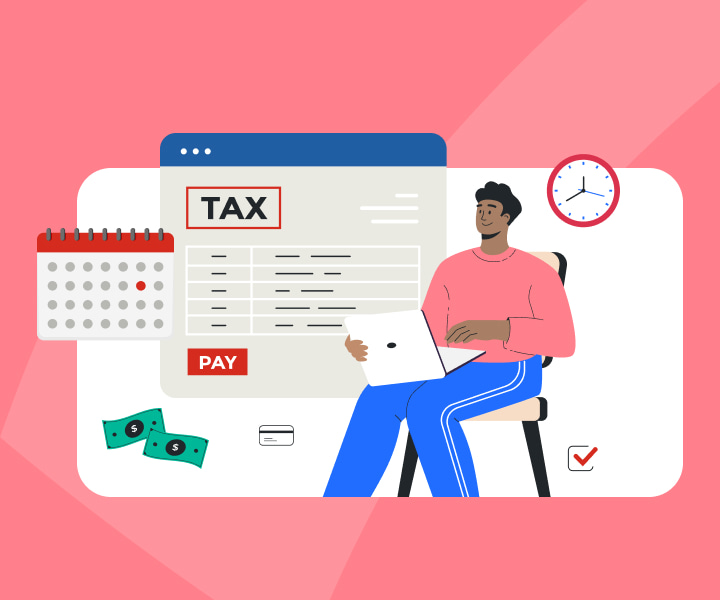How to Calculate Travel Benefits for the Northern Residents Deduction
TurboTax Canada
November 19, 2020 | 3 Min Read
Updated for tax year 2025

Are you relocating to the north for employment? You may be able to claim the Northern Residents Deduction on your personal Income Tax and Benefit Return. If you lived in a prescribed zone on a permanent basis for a minimum of six straight months, you most likely qualify for the deduction. If you incur travel expenses while travelling to the north for work, it’s important to know the “lowest of the three” rule to make sure you claim the correct amount on your income tax return.

If you relocate up north for work you may be eligible for a tax deduction.
Qualifying Standard
According to Canada Revenue Agency, to qualify for Northern Resident Deductions, you “must have lived, on a permanent basis, in a prescribed northern or intermediate zone for a continuous period of at least six consecutive months.”
There may be a limit to the deduction you can claim.
- If you lived in a prescribed northern zone, you can claim the full amount of the deduction.
- However, if you only lived in a prescribed intermediate zone, you can only claim half of the deduction.
While the Northwest Territories, Nunavut and the Yukon are located in prescribed northern zones, places in other provinces may be considered Northern or Intermediate depending on where they’re located. CRA has a complete list of zone A and zone B locations.
Calculating the Northern Residents Deduction
A lot of taxpayers aren’t aware of this deduction, and there are two deductions you can claim: one for residency for living in a prescribed zone, and a second deduction for travel benefits received from your employer. Travel benefits refer to those included in your paycheque and shown on your tax slip. The taxable travel benefit amount received from your employment in the prescribed zone will be shown in Box 32 or 33 of your T4 slip, or in Box 028 or Box 116 of your T4A slip. To calculate all three components of the Northern Residents Deduction, you’re required to complete Form T2222 – Northern Residents Deductions.
Travel Benefits Explained
Employers sometimes compensate employees for travelling to and from a prescribed northern zone.
When that’s the case, you’ll receive a travel benefit from your employer to help offset the cost of commuting up north from your closest designated city. To claim the deduction, your employer must pay your regular annual earnings, plus a travel benefit. CRA doesn’t allow you to claim the deduction if travel benefits are included in your salary. Your employer can reimburse you after a trip or based on a previously agreed-upon amount.
The Lowest of the Three Rule
Normally, travel benefits received from your employer are considered taxable benefits. But, you can claim some of your travel expenses under certain circumstances. Travel expenses include air travel, bus, train, meals and lodging.
The “lowest of the three” rule says you can claim the lowest of these three amounts:
- The travel benefit found on box 32 of your T4 slip
- The total of your travel expenses
- The lowest return airfare available at the time of the trip between the airport closest to your Northern residence and the nearest city.
CRA defines the lowest return airfare available at the time of the trip as “the lowest return airfare for regularly scheduled commercial flights on the date that the travel began.” It also includes any GST/PST and airport taxes.
Additional charges such as the following are not considered part of the lowest return airfare:
- flight cancellation insurance
- meals
- baggage surcharges
For Northern travel, you may choose the $1,200 standard amount instead of calculating the "lowest return airfare (LRA)" for a trip. This option is available if: You did not receive a taxable travel allowance from an employer, or The $1,200 rate is higher than the allowance that was provided.
You can also claim benefits for medical-related travel on box 33 of your T4 slip. This generally refers to the cost of transportation to the place where medical treatment is available, plus reasonable meal, vehicle and accommodation expenses if they’re directly related to medical treatment and no substantially similar treatment is available closer to home.
There is no limit to the number of medical travel claims you can make in a year, but there’s a limit of two trips per year for non-medical-related travel.
What Edition of TurboTax Is Right for Me?
Whether business income, rental property or capital gains, TurboTax has the right software for you Answer a few simple questions on our product recommender and we can help guide you to the right edition that will reflect your individual circumstances.
You can always start your return in TurboTax Free, and if you feel the need for additional assistance, you can upgrade to any of our paid editions or get live help from an expert with our Assist & Review or Full Service*. But don’t worry, while using the online version of the software when you choose to upgrade, your information is instantly carried over so you can pick up right where you left off.
*TurboTax Full Service is not available in Quebec.
- Photo Credits – DC Productions/Digital Vision/Getty Images
Related articles

© 1997-2024 Intuit, Inc. All rights reserved. Intuit, QuickBooks, QB, TurboTax, Profile, and Mint are registered trademarks of Intuit Inc. Terms and conditions, features, support, pricing, and service options subject to change without notice.
Copyright © Intuit Canada ULC, 2024. All rights reserved.
The views expressed on this site are intended to provide generalized financial information designed to educate a broad segment of the public; it does not give personalized tax, investment, legal, or other business and professional advice. Before taking any action, you should always seek the assistance of a professional who knows your particular situation for advice on taxes, your investments, the law, or any other business and professional matters that affect you and/or your business.









